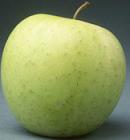morganbj
Posts: 3634
Joined: 8/12/2007
From: Mosquito Bite, Texas
Status: offline

|
quote:
ORIGINAL: shunwick
It seems rather strange that designers go to extraordinary lengths to create truly complex supply models and then feed in to them all the wrong numbers. There is indeed a great deal of logistical fun to be had if we could only persuade designers to supply the TOAW III battlefields!
I don't think the supply model is complex. I think it is too oversimplified. Let me explain.
Back when TOAW first came out, there was a lot of discussion about this topic and someone stated that Norm uses "supply" as a way to reduce the tempo of operations from what others have called operational friction, i.e., the wear and tear that results from conducting operations (Actually, I think it was Norm himself who said this). This obviously comes from supply consumption, but also fatigue on men and equipment. From my military experience (15 years in Armor/Cavalry units), I can say that operational friction is definitely a major factor. But, the use of the TOAW supply system might not have been the best way to show this.
Let's set aside traditional supply for a moment. Human fatigue can be managed up until a unit reaches some "breaking point" (I don't know how else to say it). So, continuous fatigue can keep units at perhaps 85-90 effectiveness for an extended period of time, but when the troops "hit the wall," effectiveness drops like a stone. When that happens only a period of time away from operations can ensure recovery. I've seen units with more than ample supply just go to hell because they were exhausted. When this exhaustion stems from a few weeks of operations, they recover quickly. But, when it is of the "hit the wall" variety, then they require perhaps a month to get back to effective fighting shape.
Mechanical fatigue is also directly related to the amount of time the equipment is in use. This is similar to human fatigue in that equipment can function with minor issues for a good period of time, but eventually engines must be pulled, gun tubes replaced, etc. So, in this regard human and mechanical are essentially the same. BUT, equipment fatigue can be managed with much less variability than can human fatigue. By that, I mean that it can be scheduled to a great extent. Human fatige can be much more dependent on things that are beyond the control of the logistics system. Morale, for example, does have a major impact.
I think that the main problem with the TOAW system is that these factors all work the same because they are part of the same model. All of these factors (true supply, humand fatigue, and mechanical fatigue), decrease at a fairly stable rate in the game; there is no sudden drop off as one sees in real life for human and mechanical fatigue. As units move and fight, the "supply" is consumed linearly. So, it is very oversimplified.
This is an operational level game, and the systems are to operate in a manner that reflects the effects on operations. Take the case of a unit that moves for three months but never fights. It ends up with a red supply rating. When attacked, it gets creamed, just like a unit that has not moved, but that has expended all its ammo. Why can't the unit that just moved and did no fighting expend it's ammo? Well at the tactical level it could. But no gas for tank units is just as impactful at the operational level as having no ammo. Mobile units have to move to be effective. For non-mobile units (e.g., the grunts), this is also partially true. After hoofing 1000 miles, troops are physically exhausted and while they can fire away, they cannot physically do all the things that they need to do to be truly combat effective. This is much less than is the case with mechanized units, but it IS true. If food and water are available, they should recover fatigue at almost the same rate if the supply level were 15% or 100%. Time is what cures their needs, not something that comes on a truck. This is NOT true for fuel and ammunition, the key traditional supply items. Those SHOULD be directly related to the supply level.
All that said, the system does seem to have a reasonable impact in the game. It DOES slow operational tempo, which was the point. It's not perfect, but it does work, kind of. Making this better can be partially done through events, but not as effectively as I would hope. I frequently go into the editor and change the supply parameters, locations. etc., to get the supply availability more to my liking, but, it's still not enough.
So, yes, the system is overly simplified. It's not broken, just "nerfed." But, it is NOT the part of the game that needs the most work. I would argue that it's the air operations system. It is simply atrocious. The naval system is just as bad, but Norm has always stated that the naval system (and to a lesser extent the air system) were supposed to be crude and highly abstracted; the emphasis of the game was on ground operations. Well, I can accept that in the case of the naval system, but after 1938, or so, the tactical air operations were an integral part of the ground operations. In TOAW, this is modelled very, vey poorly.
|
 Printable Version
Printable Version






 ). The time scale is in days instead of hours so, say a hill, can be overcome in a weeks time, no problem. Same with a river defence. Even one day is enough.
). The time scale is in days instead of hours so, say a hill, can be overcome in a weeks time, no problem. Same with a river defence. Even one day is enough. 












 New Messages
New Messages No New Messages
No New Messages Hot Topic w/ New Messages
Hot Topic w/ New Messages Hot Topic w/o New Messages
Hot Topic w/o New Messages Locked w/ New Messages
Locked w/ New Messages Locked w/o New Messages
Locked w/o New Messages Post New Thread
Post New Thread